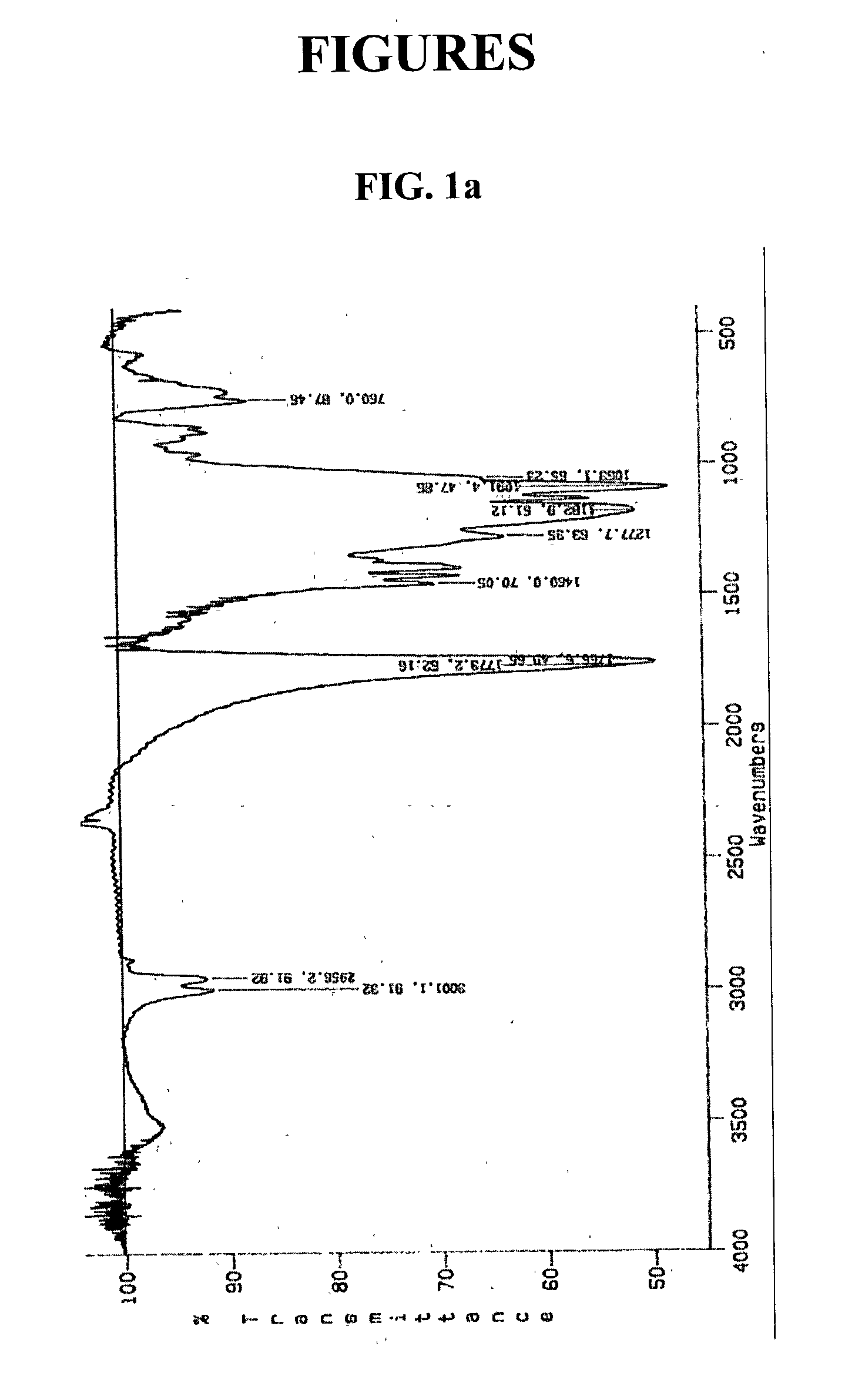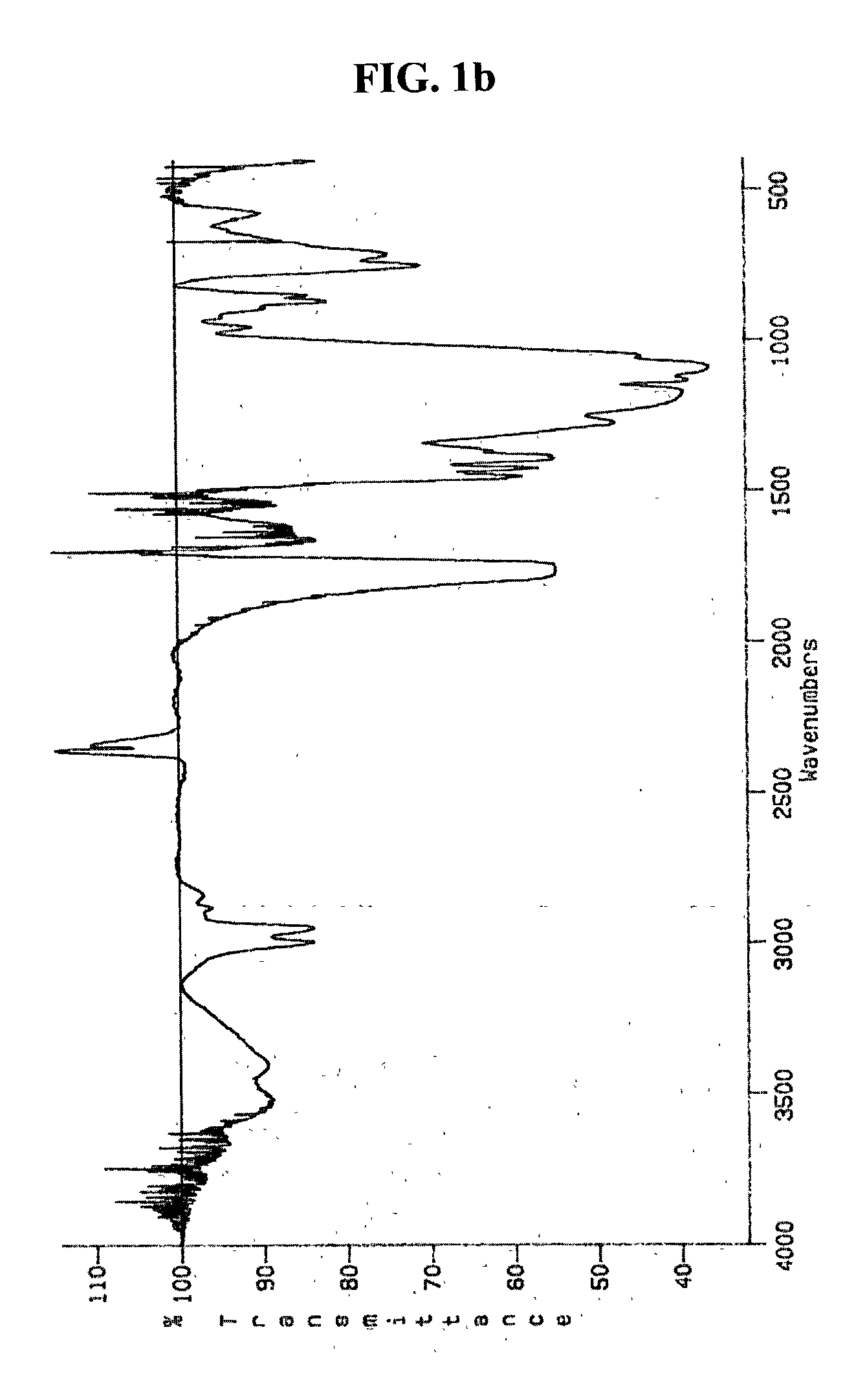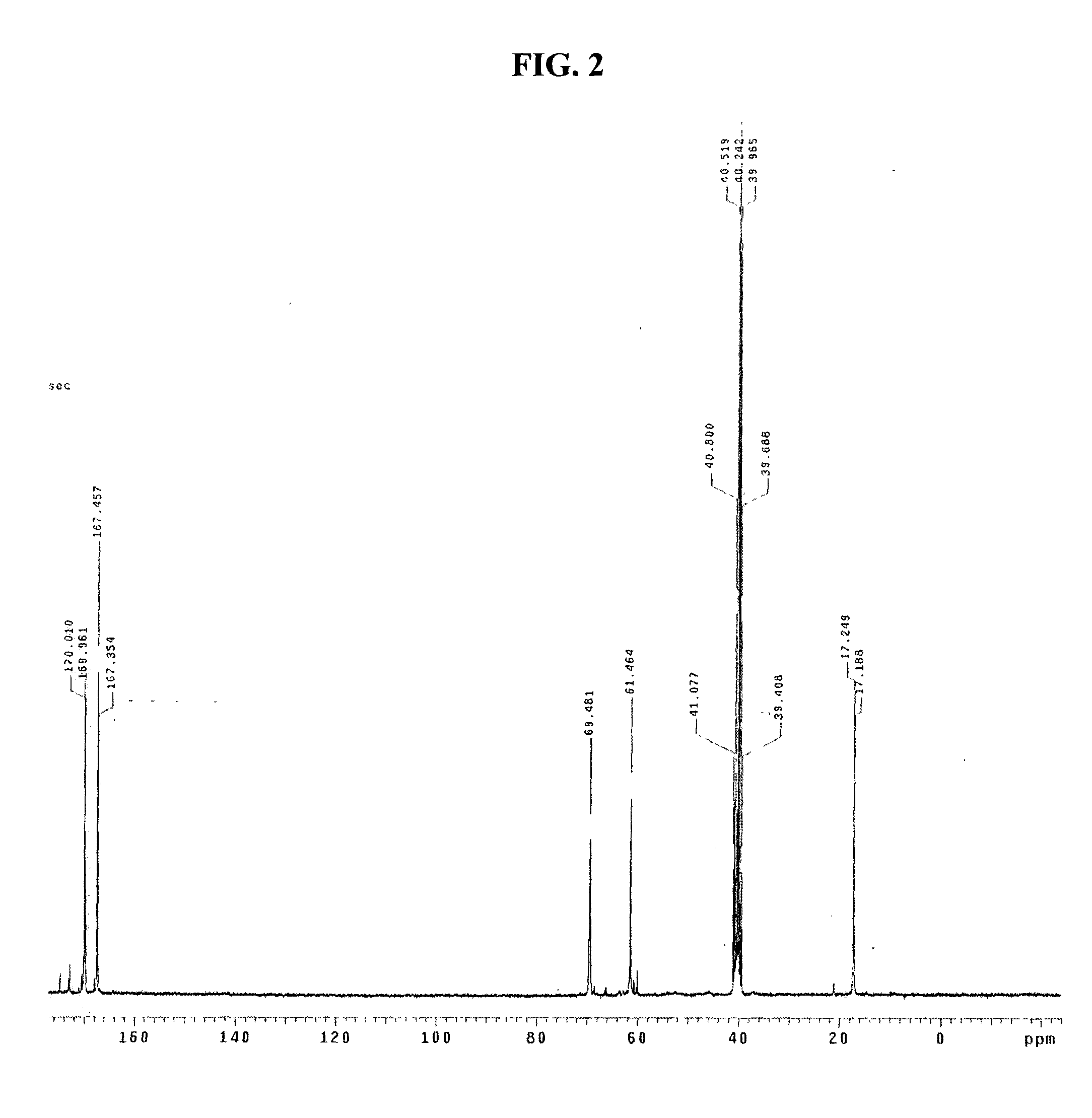Amphiphilic biodegradable block copolymers and self-assembled polymer aggregates formed from the same in aqueous milieu
a biodegradable block and polymer aggregate technology, applied in the field of amphiphilic biodegradable block copolymers and self-assembled polymer aggregates formed from the same in aqueous milieu, can solve the problems of difficult to increase penetration into tissue, limited forming various structures of polymer aggregates, and small volume of core parts to contain drugs
- Summary
- Abstract
- Description
- Claims
- Application Information
AI Technical Summary
Problems solved by technology
Method used
Image
Examples
example 1
Linear polyethylenimine(Mn=400)-poly(D,L-lactide-co-glycolide) (Mn=11,000) block copolymer (carbamate bond)
[0052] 50 ml of dimethylformamide and 145 mg of N,N-carbonyldiimidazole (CDI) were introduced into the reactor and then stirred uniformly. Thereto was added 5 g of poly(D,L-lactide-co-glycolide) (RG502, Boehringer Ingelheim, Germany), to activate its terminal hydroxy group. To said solution was added 500 mg of linear polyethylenimine(number-avera-ge molecular weight: Mn=400) and then, stirred under condition of 1 atm and room temperature. After 12 hours, the resultant was filtrated with nylon filter with 0.45 .mu.m of pore, and then dispersed in tertiary distilled water to remove residue reactant and reagent by dialysis.
[0053] Molecular-weight distribution of the obtained polymer was analyzed by gel permeation chromatography. The result confirmed that the obtained polymer exhibits single distribution of molecular weight.
[0054] Specific peaks of amine and ester were analyzed by ...
example 2
Branched polyethylenimine(Mn=600)-poly(D,L-lactide-co-glycolide) (Mn =11,000) block copolymer (carbamate bond)
[0057] 50 ml of Dimethylformamide and 145 mg of N,N-carbonyldiimidazole were introduced into the reactor and then stirred uniformly. Thereto was added 5g of poly(D,L-lactide-co-glycolide) (RG502), to activate its terminal hydroxy group. To said solution was added 500 mg of branched polyethylenimine(Mn=600) and then, stirred under condition of 1 atm and room temperature. After 12 hours, the resultant was filtrated with nylon filter with 0.45 .mu.m of pore, and then dispersed in tertiary distilled water to remove residue reactant and reagent by dialysis.
[0058] As shown in FIG. 3, gel permeation chromatography analysis confirmed that the obtained polymer exhibits single distribution of molecular weight.
[0059] Specific peaks of amine and ester were analyzed by means of infrared spectroscope, and identification of the obtained polymer was analyzed by carbon nuclear magnetic reson...
example 3
Linear polyethylenimine(Mn=400)-poly(D,L-lactide-co-glycolide) (Mn=25,000 ) block copolymer (amide bond)
[0061] 100 ml of Dimethylformamide, 123 mg of dicyclohexyl carbodiimide (DCC) and 70 mg of N-hydroxysuccinimide (NHS) were introduced into the reactor and then stirred uniformly. Thereto was added 5 g of poly(D,L-lactide-co-glycolide) (RG503H), to activate its terminal hydroxy group. To said solution was added 0.8 g of linear polyethylenimine(Mn=400-) and then, stirred under condition of 1 atm and room temperature. After 12 hours, the resultant was filtrated with nylon filter with 0.45 .mu.m of pore, and then dispersed in tertiary distilled water to remove residue reactant and reagent by dialysis.
[0062] Gel permeation chromatography analysis confirmed that the obtained polymer exhibits single distribution of molecular weight.
[0063] Specific peaks of amine and ester were analyzed by means of infrared spectroscope, and identification of the obtained polymer was analyzed by carbon nu...
PUM
| Property | Measurement | Unit |
|---|---|---|
| Tg | aaaaa | aaaaa |
| Tg | aaaaa | aaaaa |
| Tg | aaaaa | aaaaa |
Abstract
Description
Claims
Application Information
 Login to View More
Login to View More - R&D
- Intellectual Property
- Life Sciences
- Materials
- Tech Scout
- Unparalleled Data Quality
- Higher Quality Content
- 60% Fewer Hallucinations
Browse by: Latest US Patents, China's latest patents, Technical Efficacy Thesaurus, Application Domain, Technology Topic, Popular Technical Reports.
© 2025 PatSnap. All rights reserved.Legal|Privacy policy|Modern Slavery Act Transparency Statement|Sitemap|About US| Contact US: help@patsnap.com



